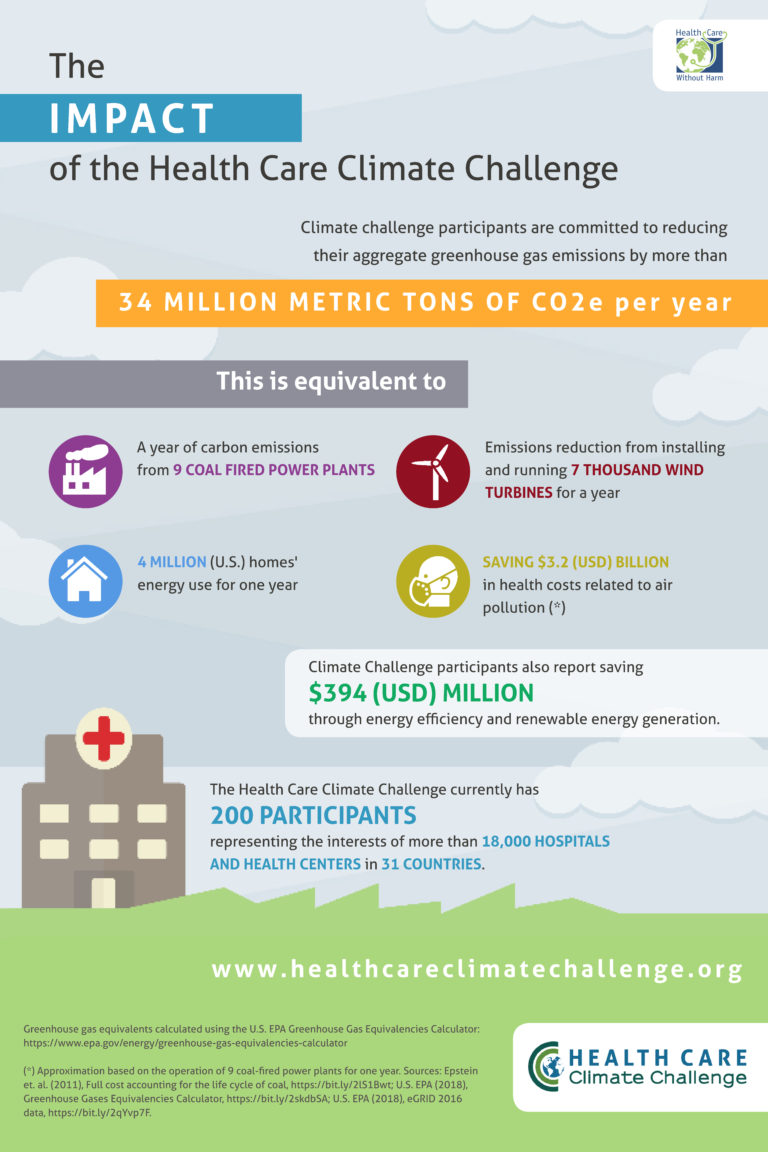Health care and climate change: The road ahead
On November 13 the Lancet Countdown on health and climate change released its 2019 report, which analyzes how a changing climate will affect the life of every child born today if actions are not taken to limit global average temperature.
Climate change affects the food every child today and in the future will eat, the communities they will live in, and the air they will breathe. If global temperatures continue to rise, communities are looking at a future with an increase in the incidence of climate-sensitive infectious diseases, a reduction in food availability, and an increase in heart and lung damage as a consequence of increasing air pollution.
This year’s Lancet Countdown report also recognizes that health care, in addition to needing to step up and address the health impacts of climate change, also makes a significant contribution to the problem. The report finds that 4.6% of global emissions are attributable to healthcare, a finding that corroborates the findings of Health Care Without Harm and Arup’s in depth study on Health Care’s Climate Footprint released in September which found that health care emissions stood at 4.4%. For context, if the health sector was a country it would be the fifth largest emitter of the world.
“With multiple studies pointing to the same problem, it is increasingly clear that the health care sector needs to take urgent action to stop its own climate pollution” says Josh Karliner, International Director for Program and Strategy at Health Care Without Harm. “Health care needs to do its part to decarbonize the global economy, while providing access to quality care and advocating for healthy people on a healthy planet.”
Many health care institutions are beginning to step up and take action. The Lancet Countdown report highlights the impact of Health Care Without Harm’s Health Care Climate Challenge.
By September of 2019, 200 institutions representing the interests of 18,000 hospitals and health centers have achieved so far a reduction of 6.8 million metric tons of CO2e emissions, and collectively reported commitments to reduce them by more than 34 million metric tons-- nearly 2 percent of global health care emissions.
This translates in U.S. $3.2 billion saved in health costs related to air pollution, and U.S. $394 million saved through energy efficiency and renewable energy generation.

Air pollution and health
Children are the most vulnerable to the effects of air pollution, which is driven by fossil fuels and made worse by climate change. According to the Lancet Countdown report, more than 90% of children worldwide are exposed to fine particulate matter levels that are above WHO guidelines, which can severely affect their lungs and their health throughout life.
“The combustion of fossil fuels is the main contributor to air pollution in most of the world. It’s also the main driver of climate change,” says Jennifer Wang, Director of Health Care Without Harm’s Healthy Energy Initiative. “We need to transition to clean, renewable energy in order to save lives from both air pollution and climate change.”
